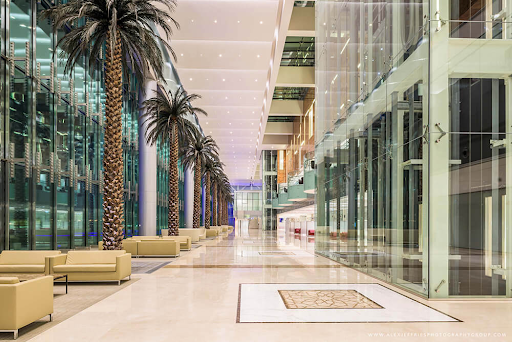How Glass Can Effectively Be Used In Hotel Designs
Glass has managed to stand out as a very versatile material over the past few years and is now gradually becoming a favourite among today’s hoteliers and architects. Proper usage of glass has delivered several functional hotels with outstanding designs without compromising on aesthetics at very competitive costs.
Especially with the integration of high-end technology in glass industries, this material has enabled several practical solutions and unique aesthetic results that inspire hoteliers. Here are some useful ways how glass can be effectively used in hotel designs and things to keep in mind during its implementation.
Facades
A facade is the principal front of a building that faces onto a street or open space. It is what gives a clear outward appearance to any architecture. This is why they are one of the most crucial design focuses in any building, as they define the entire building’s character.
Using glass for a hotel’s facade provides flexibility with transparency and translucency in uplifting an airy and natural ambience. They can be easily complemented with both existing or new interior styles and decorative glass options give hotel architects the freedom to be creative in their designs. A well-designed glass facade in hotels can attract distant travellers, invite them remotely and create a very good first impression for guests.
Toughened glass, produced by heat treatment, is the most commonly used option for facades, as they are five times stronger than ordinary glass and have high resistance to physical and thermal shock. When installing glasses as facades, hotels need to consider optimum lighting and heating/air conditions. It’s also crucial to examine whether the proportion of glass and walls affect energy consumption.
Dividers
One of the common problems in hotel rooms is the challenge to save space while still maintaining the guest’s experience. This is where the architect has to make sure the room has enough space for the furniture and also creates proper space alignment.
In this quest for comfort and functionality, again glass can be used to design a room while saving space and meeting interior expectations. In contrast to a classic wall, glass dividers make the room look bigger, lighter and more comfortable with an airy ambience.
When using glass dividers as a design element in hotels, it’s important to thoroughly study the needs of each room, so that it doesn’t lower the experience quality for guests. For example, special emphasis must be given to sound insulation in bathrooms. Similarly, analyse if visual insulation is also necessary, as glass is a transparent material and preserving guests’ privacy is crucial to their experience.
Frosted, glazed, etched, and acoustic glass are some common options that can be used for this design purpose in hotels.
Furniture
In a hotel, furniture plays a significant role in affecting the whole interior design style. An innovative hotel interior requires stylish furniture, and glass as a material allows just that.
Over the past few years, industrial designers and decorative glass companies have been daring to present more bold statement furniture pieces by combining glass with various other materials like wood, metal and stone. Using glass furniture as a design statement in a hotel not only benefits aesthetically but also supports effective space planning and space function alongside providing more comfort, convenience and personality to any space.
There are many types of furniture glass classified according to properties like easy installation, minimal maintenance, scratch resistance, durability, water and shock resistance etc. One of the main things to consider when using glass furniture to design hotels is to ensure the guest’s safety; they should follow the required security specifications where installed.

